
Harnessing the Power of Collaborative Learning
As the world becomes a global village, carrying out a task in a group is essential. That is why as organizations become more refined, the emphasis in terms of achievement is now on the group’s results. This change is promoted by one particular approach that is collaborative learning strategy, which focuses on collaboration, sharing of information resources, and interaction among learners. What is Collaborative Learning? Teaming or group learning is a form of learning where students are grouped in teams to work on a certain assignment in order to achieve a certain goal. In this case, at the workplace it is understood as establishing conditions for learning at the workplace from co-learner through experience sharing, discussion and collaborative practice. Employees’ problems are solved in groups, all the members of which possess different skills and point of view on the issue. It not only increases knowledge but also increases the relationships between the members of teams making it easier for organizations to enhance the pride and – in – team identity. CU’s Collaborative Learning Model: A Way of Promoting the Benefits of Learning The Benefits of Collaborative Learning Group work is one way of knowledge delivery where a number of values accrue from the process besides the knowledge content. Here’s how it can transform your organization: Enhanced Problem-Solving: This is the case since employees bring out their various angles and experience into the team. This is because the different thoughts that are generated come up with more creative ideas and improved decisions in the end. Increased Engagement: Education in a group is a lot more stimulating than doing it on their individual level. Gaining and discussing knowledge with one’s peers makes it easier for employees to remain motivated and to make the knowledge stick. Knowledge Sharing: Group learning fosters the sharing of knowledge, ideas, experiences and expertise among the national employees. ID also contributes to enhancing the knowledge of individual learners, which in turn contributes to the improvement of the organization as a whole. Improved Communication Skills: This is why team work demands communication in order to produce the best in class output to the team. In collaborative learning employees can learn to present their ideas, listen to others and also give constructive criticism. Stronger Team Dynamics: Perhaps equally important, collaborative learning helps the folks on a team feel that they are in it together. Since many employees are involved in contributing to or achieving the goal, they mean that they will be working closely together hence fostering good corporate camaraderie. Implementing Collaborative Learning in the Workplace It is not necessary that integrating collaborative learning into the scheme of training and development of your organization should be a herculean task. Here are a few ways to get started:Here are a few ways to get started: Peer Learning Groups: Form small interest groups to which employees can be assigned in order to keep discussing issues of concern in their working environment. It can be self generated or generated by a leader and can be on anything from new trends in the industry to problem solving. Project-Based Learning: Organize assignments in a way that makes teams solve real-life problems using their coordination skills. It also further assists the employee’s in applying the theories learned in a practical organization environment while they also get to learn from the strength of other employees. Mentorship Programs: Mentorship program: attainable by matching seniors with junior staff and have them work in teams. This is a good method through which knowledge and skills can be transferred in a systematic manner and at the same time create friendly working contacts within the organization. Collaborative Tools and Platforms: Use technology-based applications and sites in an organization that can support working together, including those that allow shared working spaces, communication, and project management. It is thus evident that these innovations facilitate teamwork even that is done from different locations. Cross-Departmental Collaboration: Initiate interdepartmental cooperation to attain organizational goals. Employees, or different groups of employees, get to understand different aspects of the organization and the skill set of their colleagues. Wrkmen’s Approach to Collaborative Learning Using feedback from this survey, the following are potential solutions to the issues raised. Addressing the issues raised require us to work as a team, since at Wrkmen we understand that our strength is in our people. That is why the Badger Group is dedicated to creating an environment that is conducive to cooperative learning, knowledge sharing, idea exchanging and emphasized on teamwork. Our approach to collaborative learning includes: Team Workshops and Training Sessions: On a more frequent basis, we organize such activities as workshops and training sessions, promoting teamwork. These sessions are always more of a participative kind in that the employees are required to come in contact with the content as well as their fellow employees. Collaborative Projects: It is also our belief that too many single person jobs are counterproductive and discourage people from contributing, so we try to make as many project as possible involving inputs/efforts from at least several team members. This also enhances the quality of the work that is to be done while at the same time sharpening the team’s ability in working in a coordinated manner. Innovation Labs: We have implemented innovation centers where people of different departments can come together and build new concepts and ventures. These labs give the freedom to think and bring out the innovative ideas which are in the mind of this team. Continuous Learning Environment: At Wrkmen training and learning are not limited to the set programmes and courses, and the staff are encouraged to continue their education. We have also mechanized a culture where an employee acquires knowledge-sharing experience from his or her counterpart daily. Formal training is not the only kind we engage in; ideas are shared through discussions, team meetings or via the knowledge-sharing system to continually learn. Conclusion Collaborative learning is not only an approach to learning but a mode of operation that recognises the importance of collective learning. Through activating the processes of collaboration, it opens up the possibilities to get the solutions, ideas, and performance from all the employees, which ultimately can improve problem-solving, innovative and organizational performances. At Wrkmen, we’ve always encouraged collaborative learning as one of our most important tools towards the training of our workforce. With continuous learning and development within our teams, we are also creating a better geared organization, better prepared to meet the opportunities of the future.
GENERAL
Wrkmen
7/21/20241 min read
Projects
CSR
NSDC
PBSSD
UNICEF
Copyright © 2025 All rights reserved | WRKMEN
Useful Links
Training
Placement
Writing
Consulting
IOT & Development


Wrkmen drives innovation with purposeful digital solutions. Discover our vision, services, and projects. Together, we create technology that inspires growth, trust, and lasting impact in every journey.
